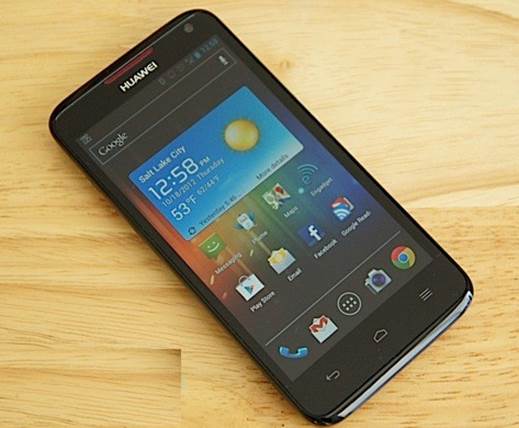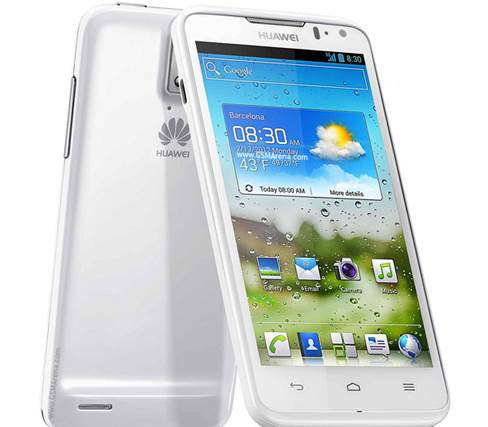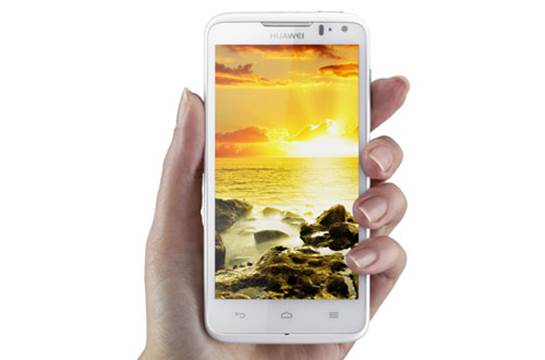In February of 2013, Huawei was on the stage
at the mobile world congress in Barcelona to bring up its most ambitious
smartphone strategy up to now. The plan was: setting up a new classification system
by dividing most of its phones into 4 key groups, starting with the high-end
D-series and down to the cheap-priced Y-series. However, the one that took most
of the spot light was Ascend D1 Quad XL, a “powerhouse” containing the homemade
quad-core CPU. This release felt unbelievably reckless. This was truly the
first change of Huawei to make its real name outside of Asia; introducing an
impressive device in time is compulsory.

Ascend
D1 Quad XL - Huawei Quad-Core Smartphone
Fast-forwarding August 2012, we witness the
2012’s equivalent thing of Motorola Droid Bionic: this unfortunate device is
the subject of unclear status and tons of delay. Don’t be afraid, finally it
was released. However, it faced an extremely competitive market that was about
to come to the holiday season, with the hardcore quad-core competition such as Samsung
Galaxy Note II, LG Optimus G and HTC One X+ which were ready to battle. We had
asked this question for the first time it released, and it becomes more
relevant now: can Huawei D Quad XL (and the new SoC) be able to compete with
its new peers? No more delay, let’s find out the answer.

Can
Huawei D Quad XL (and the new SoC) be able to compete with its new peers?
Hardware
What’s the best way to put aside the
buzzing words around an upcoming high-end product? Delay it for 4 or 5 months
then release it with lower technical specs that you’ve promised from the
beginning? That’s the story of Ascend D1 Quad XL, which is planned to be
available in Germany, Hong Kong, Canada, Russia, Middle East, Norway and
Denmark before the end of the month. When it was released, the XL version based
on the unfortunate name of D Quad XL until Huawei fixed it considered to be a D1
Quad with larger battery and added with a thicker frame, in the same way as Motorola
Droid RAZR Maxx with tits thinner copy. Richard Yu, president of the design
department at Huawei, advertises it as “the fastest quad-core smartphone on the
world”, thanks to the “homemade” quad-core HiSilicon microprocessor. With just
a few quad-core devices in the market, this announcement is reliable at least.
This doesn’t mean that XL was convicted at
the beginning, but it makes the way to success full of obstacles and dangers. Huawei
not only faced bigger competition with relevant components, the final product
also witnessed some adjustments – most of which weren’t for the better. In the
period of time since the Mobile Word Congress, the microprocessor taking the
responsibility for being the “world’s fastest one” was decelerated a little and
the frame was even thicker. Luckily, the battery witnessed a mild increase to 2,600mAh
(from 2,500mAh), but it’s the only positive change. Regardless of the shaky
history of the device, it still benefits the future of the company which, until
2013, has never produced a dual-core device, not even mentioning the more
powerful one. In another way, mono-core Honor which best could only be at the
middle range at that time was the high-end device of Huawei until; February of
this year. In fact, cheap devices are the things the company could do best, so
of course, it’s putting its hands to the new territory here.
The first thing attracting our attention
after taking it out of the box is its size; as mentioned before, it won’t be
the winner of any competition for the “world’s thinnest phone”, as well as
can’t be able to sneak up to the podium. The official spec sheet of Huawei lists
out the thickness of Quad XL which is 11.5mm (0.45 inch) and we even measure it
ourselves with the hope of announcing that the company is wrong somewhat.
Indeed it’s true. That thins makes us worry for some reasons. First, we know
that Huawei designs thin phones, which is proved by Ascend P1 and P1S, but it
looks like the designers don’t even try to reduce the size of XL. Second, at
first it’s supposed to be 10.9mm thick, and could be bulge due to the result of
larger battery. Finally, the battery can’t be removed, which means that the
phone is even thicker if Huawei make it accessible. Huawei tries its best to
make the device look fashionable regardless of the size, and fortunately it
feels more comfortable than what we expect from a 11.5mm-thich phone when
holding in our hands; it can’t defend for its bulk, but at least it makes the
phones somewhat can bearable. With 5.11 ounces (145g), it stays at the middle
position for smartphone weight. It has flat back and a tiny lump at the rear
for the camera, and the curved-down edges to mount to the sides, which is
pretty alike the way the baked bread emerges on the tray. At the front, you
will see a 4.5-inch screen reinforced by the front camera and then LED
notification light (RGB) on top and 3 capacitive buttons (Back, Home and Menu) at
the bottom. The whole thing is covered with Gorilla Glass; though, it doesn’t
help to resist scratching, but at least it can bear much better with the car
keys and the other things that can easily cause scratch. The bezel is not
large, but don’t expect an edge-to-edge screen on Quad XL.

The
first thing attracting our attention after taking it out of the box is its
size;
There’s a volume rocker on the right of D1
Quad XL, a power/standby button and a standard headphone jack on the top, and
you will see micro-USB/MHL on the left while the bottom is still empty. The
rough back, which increase friction for better holding, and provides 8MP camera
and LED flash near the top, with a 1 mic right below them as well as the
speaker grille intruding near the bottom left. Prying the cover open to reveal
the large battery locked in its tray – is not accessible without the proper
tools – as well as the slots for the full-size SIM (no micro-SIM here), and 1 microSD
for external storage. You will also want the extra capacity, because the device
only includes 8GB, in which users can only access 5.29GB. That’s not much if
you’re planning to jam movies, music, games, images and HD videos onto the new smartphone.
Huawei confirmed with us that polycarbonate and metal were the main materials
used on the phone, which made us more comfortable, but polycarbonate was more
common on the outside. Finally, D1 Quad XL lacks support for NFC and wireless
charge, which of course puts it in disadvantages comparing to other high-end
phones existing on the market, but it offers DLNA and MHL.